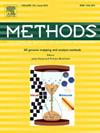Drug-target interaction prediction based on metapaths and simplified neighbor aggregation
IF 4.3
3区 生物学
Q1 BIOCHEMICAL RESEARCH METHODS
引用次数: 0
Abstract
Drug-target interaction (DTI) prediction is critical in drug repositioning and discovery. In current metapath-based prediction methods, attention mechanisms are often used to differentiate the importance of various neighbors, enhancing the model's expressiveness. However, in biological networks with small-scale imbalanced data, attention mechanisms are prone to interference from noise and missing data, leading to instability in weight learning, reduced efficiency, and an increased risk of overfitting. To address these issues, we propose the use of average aggregation to mitigate noise, simplify model complexity, and improve stability. Specifically, we introduce a simplified mean aggregation method for DTI prediction. This approach uses average aggregation, effectively reducing noise interference, lowering model complexity, and preventing overfitting, making it especially suitable for current biological networks. Extensive testing on three heterogeneous biological datasets shows that SNADTI outperforms 12 leading methods across two evaluation metrics, significantly reducing training time and validating its effectiveness in DTI prediction. Complexity analysis reveals that our method offers a substantial computational speed advantage over other methods on the same dataset, highlighting its enhanced efficiency. Experimental results demonstrate that SNADTI excels in prediction accuracy, stability, and reproducibility, confirming its practicality and effectiveness in DTI prediction.
基于元路径和简化邻居聚集的药物-靶标相互作用预测
药物-靶标相互作用(DTI)预测是药物重新定位和发现的关键。在现有的基于元路径的预测方法中,通常使用注意机制来区分不同邻居的重要性,增强模型的表达能力。然而,在具有小规模不平衡数据的生物网络中,注意机制容易受到噪声和缺失数据的干扰,导致权重学习不稳定,效率降低,过拟合风险增加。为了解决这些问题,我们建议使用平均聚合来减轻噪声,简化模型复杂性并提高稳定性。具体来说,我们介绍了一种简化的均值聚合方法用于DTI预测。该方法采用平均聚合,有效降低噪声干扰,降低模型复杂度,防止过拟合,特别适用于当前的生物网络。在三个异构生物数据集上的广泛测试表明,SNADTI在两个评估指标上优于12种领先的方法,显著减少了训练时间,并验证了其在DTI预测中的有效性。复杂性分析表明,在相同的数据集上,我们的方法比其他方法提供了实质性的计算速度优势,突出了其提高的效率。实验结果表明,SNADTI具有较好的预测精度、稳定性和可重复性,验证了其在DTI预测中的实用性和有效性。
本文章由计算机程序翻译,如有差异,请以英文原文为准。
求助全文
约1分钟内获得全文
求助全文
来源期刊

Methods
生物-生化研究方法
CiteScore
9.80
自引率
2.10%
发文量
222
审稿时长
11.3 weeks
期刊介绍:
Methods focuses on rapidly developing techniques in the experimental biological and medical sciences.
Each topical issue, organized by a guest editor who is an expert in the area covered, consists solely of invited quality articles by specialist authors, many of them reviews. Issues are devoted to specific technical approaches with emphasis on clear detailed descriptions of protocols that allow them to be reproduced easily. The background information provided enables researchers to understand the principles underlying the methods; other helpful sections include comparisons of alternative methods giving the advantages and disadvantages of particular methods, guidance on avoiding potential pitfalls, and suggestions for troubleshooting.
 求助内容:
求助内容: 应助结果提醒方式:
应助结果提醒方式:


